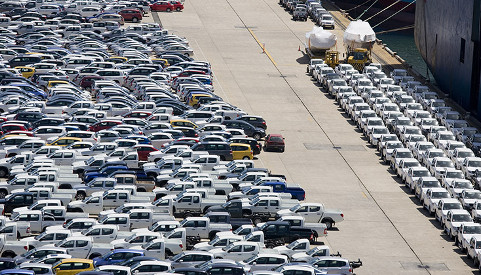
The Shift Away from Fossil Fuels
August 15, 2016
The following interview with Richard Heinberg was originally posted at InfrastructureUSA.org.
Transitioning to Electric Transportation
Our most recent efforts have been to identify how the process of transitioning to 100% renewable energy will impact society. And we look not just at the problem of energy supply, how to build enough solar panels and wind turbines, but also at how we use energy and how easy or difficult it will be to transition to the food system, the transportation system, manufacturing, and so on, to using renewable energy. Of course, solar and wind are direct sources of electricity so we will need to electrify as much of our energy usage as we can.
Highway Materials: Need for Innovation
Also the building of highways, which is a big part of infrastructure, is currently dependent on two materials that are problematic: one is concrete, and the other is asphalt. Asphalt, of course, is made directly from fossil fuels, namely low-grade oil. And concrete, its key ingredient is cement, which is produced at very high temperatures—about 1500 degrees Celsius—in giant kilns that are fired with fossil fuels—usually coal, sometimes natural gas.
Future-Minded Infra Investment
If we’re just imagining updating our infrastructure by replacing it with more of the same, then I think we’re locking ourselves into investments that really don’t have much of a future. We’re going to have to think about what infrastructure makes sense in a future society that’s largely powered by renewable energy sources that may be less mobile, and that we’ll be using resources probably much more efficiently, and then invest accordingly.
Dropping Fossil Fuels: The Easy Way or the Hard Way
Fossil fuels, which provide 85% of our current energy, suffer from two fatal drawbacks. One of which is the fact that they produce greenhouse gasses that are undermining the viability of our climate and therefore our future of industrial society…The other drawback of fossil fuels is that fact that these are depleting, non-renewable resources…So one way or another we will be moving away from fossil fuels as time goes on, it’s just a question of whether we do it in a planned and organized way, or just wait until we can no longer afford to extract the stuff that’s left.
Bringing Renewables to the Grid
There’s increasing experience with integrating higher levels of renewable energy into grid systems. This higher level of experience is taking place in European countries, in US States that have relatively high levels of renewable penetration, including California. But there are still challenges remaining…We concluded, my co-Author David Fridley and I, that it’s likely that our biggest challenge in the transition will be the problem of scale. It’s relatively easy to produce renewable energy at smaller scale and to integrate it into existing electrical grids. As the scale increases, that’s when the problems arise.
Download full transcript (PDF): Richard Heinberg on The Infra Blog
Cars image via shutterstock.
